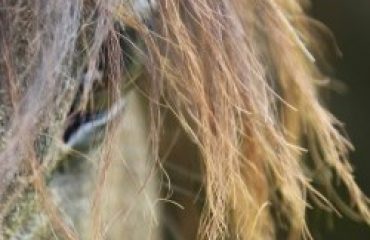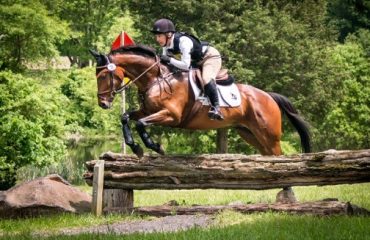 Richard Wheeler, DVM, was born in the U.K. and graduated from the Royal Veterinary College, London, in 2002. Dr. Wheeler then completed a two-year internship at Greenwood, Ellis and Partners (now Newmarket Equine Hospital) in Newmarket. In 2005, he moved to Wellington, Florida, to join Palm Beach Equine Clinic and he became a partner in 2009. Dr. Wheeler’s primary concentration is equine sports medicine. He is an FEI Veterinary Delegate for show jumping and dressage and has authored several published articles on the topic of equine sports medicine. Dr. Wheeler has served on the board of the USHJA Horse and Rider Advocates Committee. In 2016, Dr. Wheeler became a founding director of the Sport Horse Research Foundation. Dr. Wheeler and his wife, Jessica, have two children. Do you have a question you want Dr. Wheeler to answer? Send questions to editor@sidelinesnews.com.
Richard Wheeler, DVM, was born in the U.K. and graduated from the Royal Veterinary College, London, in 2002. Dr. Wheeler then completed a two-year internship at Greenwood, Ellis and Partners (now Newmarket Equine Hospital) in Newmarket. In 2005, he moved to Wellington, Florida, to join Palm Beach Equine Clinic and he became a partner in 2009. Dr. Wheeler’s primary concentration is equine sports medicine. He is an FEI Veterinary Delegate for show jumping and dressage and has authored several published articles on the topic of equine sports medicine. Dr. Wheeler has served on the board of the USHJA Horse and Rider Advocates Committee. In 2016, Dr. Wheeler became a founding director of the Sport Horse Research Foundation. Dr. Wheeler and his wife, Jessica, have two children. Do you have a question you want Dr. Wheeler to answer? Send questions to editor@sidelinesnews.com.
How is equine veterinary care different in the U.S. compared to other countries you’ve worked in?
This is a timely question, as I just concluded a trip to Europe where I was visiting some clients who were showing there. The first thing that springs to mind is how small the world is these days regarding equine veterinary care. The majority of show jumping and dressage horses we work on are bred in Europe. We are regularly involved with the examination of horses purchased in Europe, either directly or working with European veterinarians; many polo horses are bred in South America. This fosters professional relationships allowing us to share our knowledge while also learning. These relationships are true of many other parts of the world and at Palm Beach Equine we have welcomed veterinarians from every continent who come to visit, learn and share knowledge.
As with most aspects of our lives, technology is changing the way we work as veterinarians. During the early years of my career, we might have received a pre-purchase report and radiographs, on occasion by mail; more recently, it is common to receive videos via WhatsApp and digital radiographs and ultrasound images within hours of the examination. These factors are further shrinking the veterinary world and we are all learning and improving by learning from each other.
Areas of difference remain, and in general, I would say these pertain to specific diseases and regulations that differ geographically. There are significantly different vaccination requirements in Europe versus the U.S. and import requirements vary by country. Regulation of equine sports varies by region and often by country. While working on horses that may travel to different countries for competition, we have to be aware of the different rules. An example would be the controlled use of specific medications that is permitted, under veterinary supervision, in horses competing under national, USEF rules. The general licensing and use of medication also varies geographically. In some countries, medication found on the shelves of feed stores would be highly illegal to possess in another country.
Many common equine diseases are similar worldwide, while others are geographically specific. While working in certain areas of the U.K., we would commonly see horses suffering from equine grass sickness. In contrast, I am not aware of any confirmed cases in the U.S. The U.K. is considered rabies-free and, while uncommon in horses in the U.S., we are vigilant and careful when evaluating acute neurological cases. Skin conditions are a common complaint in equine veterinary medicine; in Florida, we often see conditions such as cutaneous habronemiasis (summer sores) and phycomycosis, which were not seen in the U.K. In Florida, we are very cautious with any eye injury given the prevalence of ocular fungal infections; this is very rare in other parts of the world where I have worked.
It is always interesting and a challenge when you encounter a new discipline within the world of equine sport. While disciplines such as show jumping, dressage, polo and Thoroughbred racing are very similar across the world, Western disciplines are much more prevalent in the U.S. and I enjoyed learning about these disciplines when I moved to the U.S. I can still remember the first Tennessee Walking Horse I was called to examine. Fortunately the owner was very gracious and taught me about the breed. On another occasion, I was sent to examine a roping horse for a show jumping client; the very famous trainer kindly offered to give me a lesson!
I recently took my horse to the vet, and my veterinarian said that my horse is suffering from a bone bruise in his fetlock. Do you have any recommendations for bone bruise care?
We are seeing such diagnoses more commonly in recent years. I am not sure if this is an increase in the prevalence of the condition, or if as a profession, we are becoming more accurate with our diagnosis with the more common use of advanced imaging techniques such as nuclear scintigraphy, CT (computed tomography) and MRI (magnetic resonance imaging).

MRI images of a 12-year-old Warmblood show-jumping horse with lameness localized to the fetlock region. The images on the left and center show increased density of the bone (black region); the image on the right has less detail but shows fluid accumulation within the bone. Images courtesy of Palm Beach Equine Clinic
First, as I have said before in this column, accurate diagnosis is very important. It is relatively common for lameness that has been localized to the fetlock region to result in normal radiographic and ultrasound examination. We often need to investigate further, with the advanced modalities mentioned above. The term ‘bone bruise’ has gained popularity in recent years and is commonly used to describe a multitude of pathology. The first distinction is the area of bone involved in the fetlock region. We often see injury to the subchondral bone (bone just under the layer of articular cartilage). More specifically, it is also important to characterize the type of bone injury. An acute injury, bone edema is often present without any other changes, ‘edema’ or fluid trapped within the bone, similar to the swelling one may find with a soft tissue injury. In more chronic cases, we observe that the bone changes in density, either by increasing the mineral content (aka sclerosis), or decreasing the mineral content resulting in bone lysis (disintegration).
The good news, in my experience, is that if identified early and with proper care, the prognosis for such an injury can be good. As with any bone injury, a period of rest is necessary to allow adequate healing.
Topical and systemic anti-inflammatory medications are often used, as well as therapies aimed at reducing inflammation within the bone. There are mixed opinions regarding the use of a group of medications called bisphosphonates. These medications are commonly used in human medicine for the treatment of osteoporosis, where the mechanism is to reduce the rate of bone breakdown. These medications have also been used in the treatment of some human bone cancers and have shown to relieve bone pain. In the U.S., there are currently two bisphosphonates used for the treatment of equine navicular disease. Their use in other bone injury would be considered “off label.” I have seen these medications used for many years in both the U.S. and Europe, and while, as with any medication, case selection is very important, I believe they can be very useful.
In severe cases, surgical intervention is warranted; the placement of a bone screw through the diseased area of bone can change the biomechanical forces through the area and act to stimulate bone healing.
In some cases, other injures will be seen concurrently with bone injury and we are often concerned with the overlying cartilage when subchondral bone injury is identified. In such cases, therapy directed at associated soft tissues and joints may be indicated.
Rehabilitation is an important factor with any injury and the use of water treadmills and swimming can be very useful in bringing a horse back to work following a bone injury.













